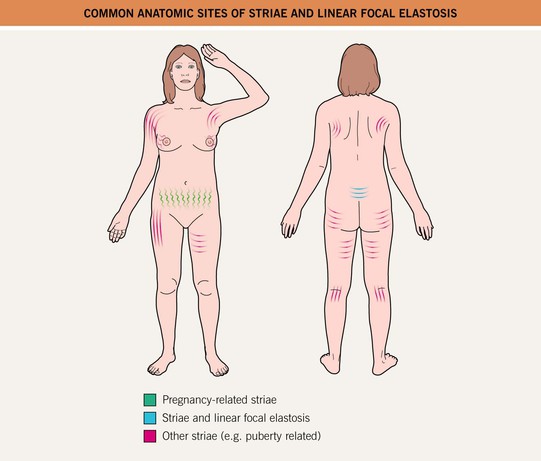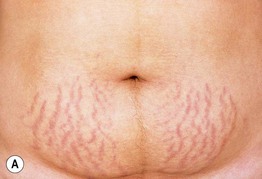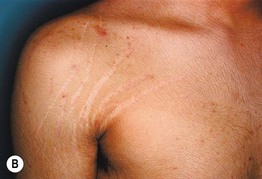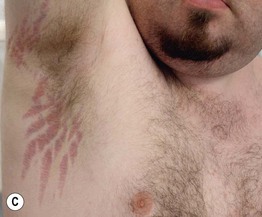82
Atrophies of Connective Tissue
This chapter focuses primarily on entities in which there is a reduction in collagen and/or elastic tissue within the dermis. They vary from very common skin disorders such as striae to cutaneous manifestations of rare genetic syndromes. Loss of subcutaneous fat, i.e. lipoatrophy, is covered in Chapter 84, while acrodermatitis chronica atrophicans is covered in Chapter 61 and Ehlers–Danlos syndrome and cutis laxa are covered in Chapter 80.
Striae (Distensae)
• Striae are multiple, symmetric, and arranged along the lines of cleavage, with the typical sites of involvement and characteristic patterns shown in Fig. 82.1; early lesions may be red-purple in color (striae rubra) but with time, most striae become skin-colored to white with fine wrinkling (striae alba) (Fig. 82.2).
• DDx: linear focal elastosis, in particular when lesions are present on the lower mid-back.
Pizogenic Pedal Papules (Piezogenic Papules)
• Herniations of fat in the heel region where there is reduced dermal connective tissue; the skin-colored papules appear with the pressure of weight-bearing and disappear when the leg is raised (Fig. 82.3A); occasionally occur on the wrist.
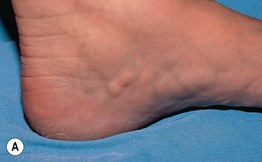
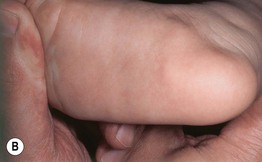
Fig. 82.3 Pizogenic pedal papules. A Skin-colored to yellowish outpouchings on the heel represent herniation of subcutaneous fat through the plantar fascia and they are sometimes painful. B Soft nodules on the medial and plantar surface of the foot in an infant. B, Courtesy, Julie V. Schaffer, MD.
• In an infantile variant, larger nodules occur on the medial aspect of the heel and their appearance does not require weight-bearing (Fig. 82.3B).
